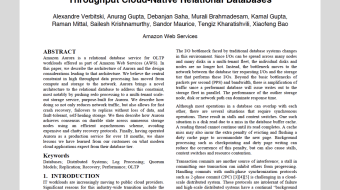Customer-obsessed science


Research areas
-
September 26, 2025To transform scientific domains, foundation models will require physical-constraint satisfaction, uncertainty quantification, and specialized forecasting techniques that overcome data scarcity while maintaining scientific rigor.
-
Featured news
-
2024Pre-trained masked language models, such as BERT, perform strongly on a wide variety of NLP tasks and have become ubiquitous in recent years. The typical way to use such models is to fine-tune them on downstream data. In this work, we aim to study how the difference in domains between the pre-trained model and the task effects its final performance. We first devise a simple mechanism to quantify the domain
-
AISTATS 20242024We propose a notion of causal influence that describes the ‘intrinsic’ part of the contribution of a node on a target node in a DAG. By recursively writing each node as a function of the upstream noise terms, we separate the intrinsic information added by each node from the one obtained from its ancestors. To interpret the intrinsic information as a causal contribution, we consider ‘structure-preserving
-
2024In this paper, we propose VidLA, an approach for video-language alignment at scale. There are two major limitations of previous video-language alignment approaches. First, they do not capture both short-range and long-range temporal dependencies and typically employ complex hierarchical deep network architectures that are hard to integrate with existing pretrained image-text foundation models. To effectively
-
CLeaR 20242024Identifying root causes for unexpected or undesirable behavior in complex systems is a prevalent challenge. This issue becomes especially crucial in modern cloud applications that employ numerous microservices. Although the machine learning and systems research communities have proposed various techniques to tackle this problem, there is currently a lack of standardized datasets for quantitative benchmarking
-
2024In the realm of geospatial analysis, the diversity of remote sensors, encompassing both optical and microwave technologies, offers a wealth of distinct observational capabilities. Recognizing this, we present msGFM, a multisensor geospatial foundation model that effectively unifies data from four key sensor modalities. This integration spans an expansive dataset of two million multisensor images. msGFM
Collaborations
View allWhether you're a faculty member or student, there are number of ways you can engage with Amazon.
View all














































